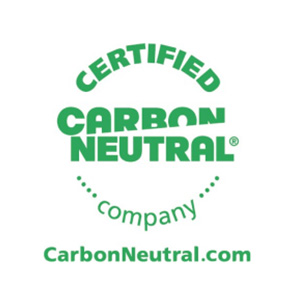Recent events in Beirut have highlighted the potential catastrophic effects of an ammonium nitrate explosion. The blast was caused by the detonation of 2,750 tonnes of ammonium nitrate as a result of the roof of the port warehouse in which it was stored catching fire.
Based upon analysis of videos, a team from the University of Sheffield have estimated that the explosion was the equivalent to one tenth of the intensity of the nuclear bomb dropped on Hiroshima in 1945. The incident resulted in the tragic deaths of 220 people, with 110 still unaccounted for at the time of writing. A further circa 3,000 individuals have been injured.
The blast destroyed the immediate dockside area, creating a crater 140 metres wide, which immediately flooded with seawater. The warehouse where the initial fire and explosions were observed was obliterated and an adjacent grain silo and nearby docked vessels were heavily damaged, as was the general port area. The blast wave also levelled buildings close to the port and caused extensive damage over much of the rest of the capital, which is home to over two million people. The shockwave even blew out windows at Beirut International Airport’s passenger terminal approximately 5 miles away. It is estimated that the explosion has caused more than £2.3bn of damage and that Lebanon’s collective economic losses may amount to £11.5bn.
Griffiths & Armour recommend that all organisations handling and storing ammonium nitrate should review their operations, risk management controls and insurance arrangements in light of this incident.
What is ammonium nitrate and where can it be found?
Ammonium nitrate is a crystal-like white solid that is an oxidising agent, i.e. is not necessarily combustible itself but assists other materials to burn. The risk of fire or explosion is therefore greatly increased if ammonium nitrate is mixed with combustible or incompatible materials, such as: organic and carbonaceous materials; powdered metals; urea; alkalis; acids; etc. Ammonium nitrate is manufactured in large quantities, most commonly as a source of nitrogen for fertiliser, but it is also used to produce explosives, for example for mining and military purposes. It has been used in several acts of terrorism, including the Oklahoma City bombing in 1995. It is important to note that fertilisers containing 28% or less nitrogen do not normally present an explosion hazard.
Large quantities of ammonium nitrate can be found at manufacturing sites, processing facilities, warehouses and ports.
Legal requirements and risk management best practice
The UK operates a strict regulatory and licensing regime in respect of ammonium nitrate. Such legislation includes:
- Control of Major Accident Hazards Regulations (COMAH)
- Dangerous Substances (Notification and Marking of Sites) Regulations 1990
- Ammonium Nitrate Materials (High Nitrogen Content) Regulations
- Planning (Hazardous Substances) Regulations
- The Dangerous Goods in Harbour Areas Regulations 2016
Best practice in respect of storing ammonium nitrate includes:
- Using single storey, dedicated, well-ventilated buildings that are constructed from non-combustible materials. Where stores are located near to densely populated areas, it may be preferable to store ammonium nitrate outside
- Limiting stack sizes and maintaining safe distances between stacks
- Locating storage away from combustible materials and all possible sources of heat, fire and explosion
- Prohibiting smoking
- Avoiding drains, channels or pits where molten ammonium nitrate from a fire could become confined
- Keeping walls, floors and equipment clean
- Maintaining handling plant and other equipment
- Clearing up spillages and contamination promptly
- Providing suitable fire-fighting equipment
- Securing the site
- Training all relevant staff
Further risk management information is available via the HSE website here.
Insurance implications
Following the Beirut explosion insurers will undoubtedly focus their attention on operations involved in the manufacturing, storage and use of ammonium nitrate, together with those in close proximity to such operations. Ultimately, this is expected to lead to:
- More detailed and regular risk management scrutiny
- Reduced insurance market capacity
- Restrictions in and availability of cover
- Increased insurance premiums
Those with strong risk management practices that are well communicated to insurers are in the best position to weather this storm.
Organisations also need to fully assess the potential impact of an ammonium nitrate explosion in determining the structure and scope of their insurance programme. This applies not only to those manufacturing, handling and storing ammonium nitrate, but also to those within the potential blast radius of such an operation.
This assessment, commonly termed an estimated maximum loss, should consider material damage, business interruption and liability exposures arising from such an event.
Griffiths & Armour can provide assistance in undertaking estimated maximum loss exercises and advising on appropriate levels of insurance cover in line with your risk appetite.
For further information please contact us and a member of our risk management team will be in touch promptly to deal with your request.










